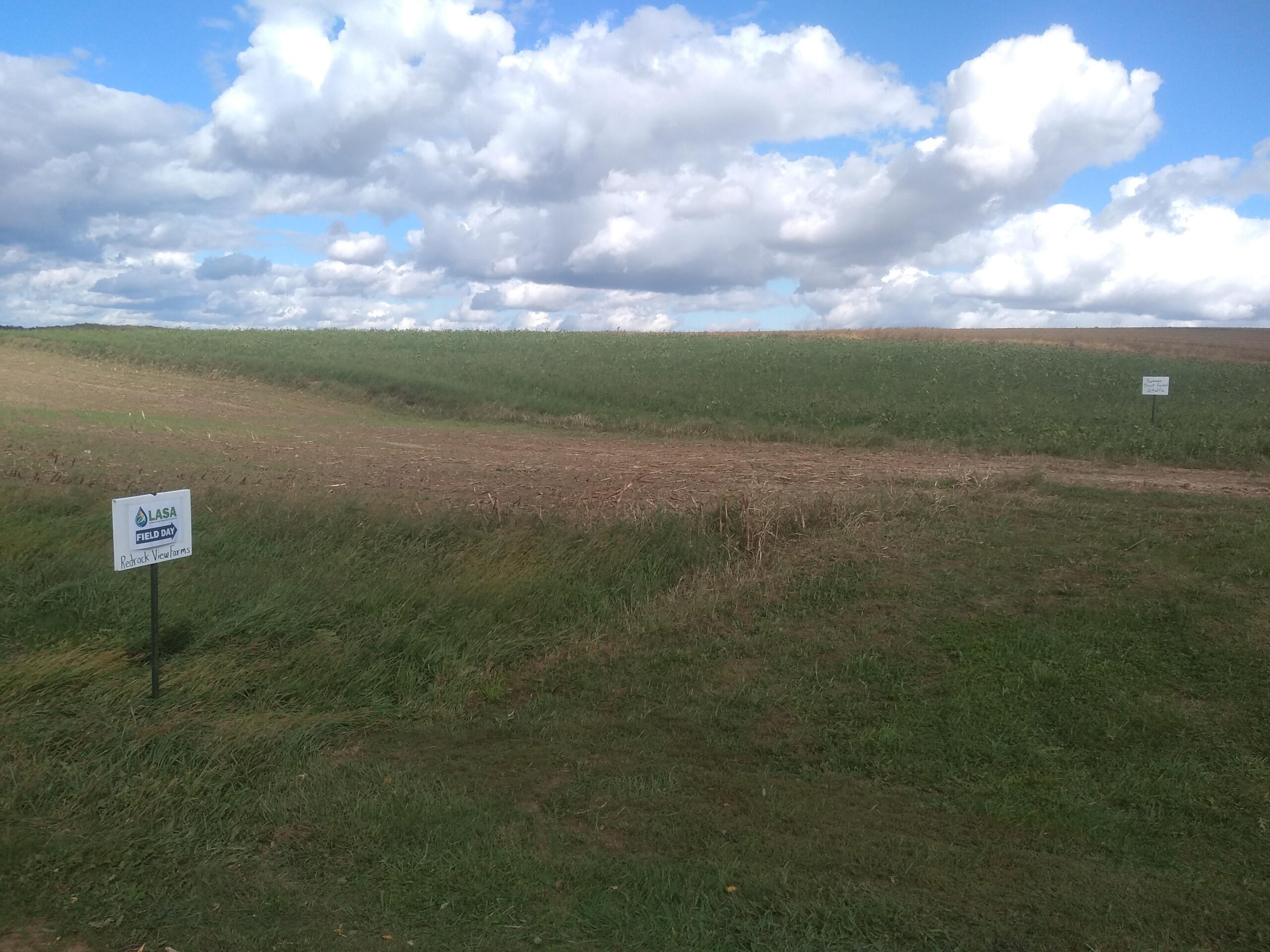By Steven Schauer for LASA
Farmers in southwestern Wisconsin are continuing to identify new techniques to conserve their valuable soil and water resources. Soils in the region are fertile yet fragile which makes collecting and storing water in the soil profile for crop production a necessity. Farmers are presented with a set of challenges not faced in other parts of the state because of the geological landscape.
Rolling hills increase the risk of soil erosion due to surface water movement. Soil profiles with silt loam topsoil, increasing clay levels in the subsoil and bedrock at varying depths as the foundation infiltrate water at a steady pace. Managing the challenges of soil and water movement gives farmers opportunities to try different conservation practices.
Lafayette Ag Stewardship Alliance (LASA) hosted a “drive-by” field day on Sept. 30 to showcase alternative cover crop options and establishment timings. Each farm incorporated planned manure application to fit the timing of cover crop growth. Four farms served as hosts for nearly 30 farmers, agronomists, conservation specialists and the public to learn more about protecting the land and water in Lafayette County.
“Farmers are identifying techniques to create “perennial cropping benefits” within standard crop rotations. It begins with promoting living roots in the soil year-round,” said Josh Kamps, Ag Educator with UW-Extension in Lafayette County. “Farmers are innovators by nature and the LASA farmer-led group puts this innovation on display by modeling new techniques on their farms. The farmers are eager to implement new techniques as part of their farming systems.”
Each farm participating in the field day displayed cover crops planted during alternative times of the year.
Darlington Ridge Farms planted Sorghum-Sudan grass following winter wheat harvest to be used as a forage crop, while Redrock View Farms planted alfalfa in early August to establish the stand for full production potential next year.
At Berget Farms, which was also used as a UW-Extension research plot, summer seeded cover crops are being utilized to capture the remaining 40 percent of energy during the growing season from August 1st until frost. These cover crop mixes are formulated to add fall soil cover, harvest and store nitrogen and increase soil health through plant diversity. The plot has 5 treatments that are replicated to increase the value of the data collected. The treatments will be evaluated for their ability to store nutrients, reduce soil erosion, improve water infiltration and offer a benefit to the following corn crop.
Kamps Farms displayed a cover crop plot with a mix of winter cereal rye, oats, tillage radish and red clover that was planted in early spring with frost still in the ground. The goal of this plot is to study the management and agronomic decisions necessary to receive the benefits of a growing cover crop early followed by a high yielding corn crop in the same cropping year.
“It was important to display the benefits cover crops can add to the fertile, fragile yet forgiving soils in our region of the state,” Kamps said. “Farmers have an opportunity to try different cover crop practices in their fields and this event gave everyone a chance to see various planting options.”

